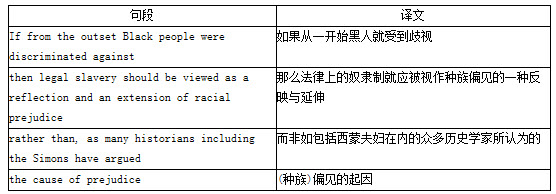The first mention of slavery in the statutes of the English colonies of North America does not occur until after 1660--some forty years after the importation of the first Black people. Lest we think that slavery existed in fact before it did in law, Oscar and Mary Simon assure us that the status of Black people down to the 1660’s was that of servants. (46) A critique of the Simons’ interpretation of why legal slavery did not appear until the 1660’s suggests that assumptions about the relation between slavery and racial prejudice should be reexamined, and that explanations for the different treatment of Black slaves in North and South America should be expanded.
(47) The Simons explain the appearance of legal slavery by contending that, during the 1660’s, the position of White servants was improving relative to that of Black servants. Thus, the Simons argue, Black and White servants, heretofore treated alike, each attained a different status. There are, however, important objections to this argument. First, the Simons cannot adequately demonstrate that the White servant’s position was improving during and after the 1660’s; several acts of the Maryland and Virginia legislatures indicate otherwise. Another flaw in the Simons’ interpretation is their assumption that prior to the establishment of legal slavery there was no discrimination against Black people. It is true that before the 1660’s Black people were rarely called slaves. But this should not overshadow evidence from the 1630’s on that points to racial discrimination without using the term slavery. Such discrimination sometimes stopped short of lifetime servitude or inherited status--the two attributes of true slavery--yet in other cases it included both. (48) The Simons’ argument excludes the real possibility that Black people in the English colonies were never treated as the equals of White people.
This possibility has important ramifications. (49) If from the outset Black people were discriminated against, then legal slavery should be viewed as a reflection and an extension of racial prejudice rather than, as many historians including the Simons have argued, the cause of prejudice. In addition, the existence of discrimination before the advent of legal slavery offers a further explanation for the harsher treatment of Black slaves in North than in South America. (50) Frey and Terry have rightly argued that the lack of certain traditions in North America--such as a Roman conception of slavery and a Roman Catholic emphasis on equality--explains why the treatment of Black slaves was more severe there than in the Spanish and Portuguese colonies of South America. But this cannot be the whole explanation since it is merely negative, based only on a lack of something.
49()
参考答案:
如果从一开始黑人就受到歧视,那么法律上的奴隶制就应被视作是种族偏见的一种反映与延伸,而非如包括西蒙夫妇在内的众多历史学家所认为的是种族偏见的起因。
解析:
[考点解析]

·主句为“legal slavery should be viewed as…rather than…”,可译为“法律上的奴隶制应被视作是……而非是……”。
·“as many historians…”可翻译在rather than之后,译为“而非如众多历史学家……”。
[词汇释义]
·outset最初,开始 ·discriminate歧视
·extension延伸,扩充

 的描绘来打动我们的感染力,就是这样产生出来的。
的描绘来打动我们的感染力,就是这样产生出来的。  按照时间顺序流逝的时间艺术具有空间的立体美感。
按照时间顺序流逝的时间艺术具有空间的立体美感。 的美就会被削弱。
的美就会被削弱。